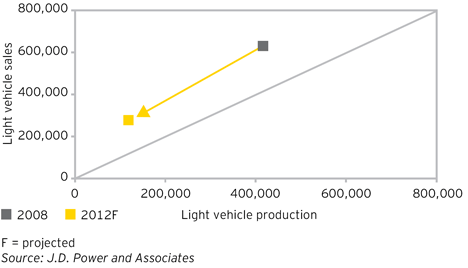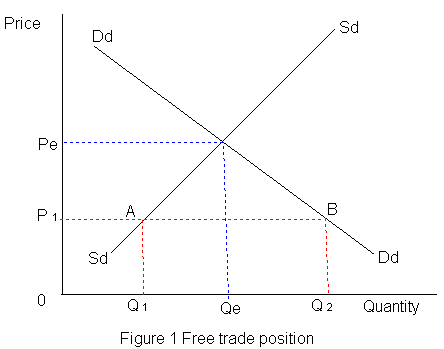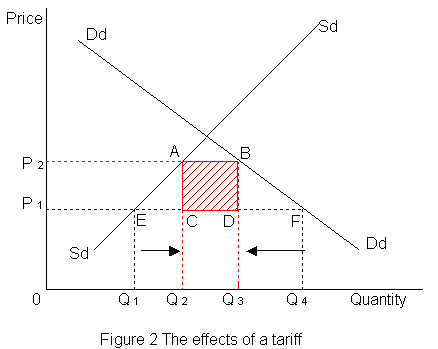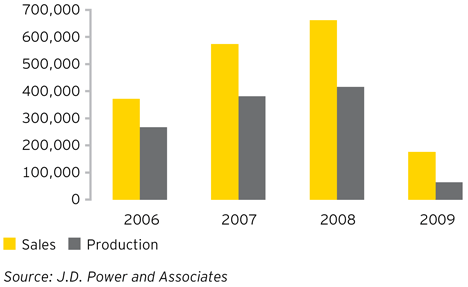In March 2014, the “Globe and Mail” carried a story on Ukraine’s move to impose new tariffs on car imports and the possible economic consequences of this initiative. Ukraine is one of the newest members of the World Trade Organization. It joined the group in 2008. In addition, it is one of the western European nations seeking to join the European Union. However, this move is likely to affect Ukraine’s relationship with members of the two groups because it is an important vehicle importer.
The purpose of this paper is to develop a commentary that analyzes the economic impacts of the move. In particular, the analysis will apply some relevant economic concepts and theories to determine its advantages, disadvantages, and validity.
According to the article, Ukraine has imposed emergency tariffs valued between 6.5% and 13% on vehicle imports. It will apply to all passenger vehicles with engine capacities ranging between 1,000 and 2,000 ccs (Auyezov 1). The government reported that the purpose of increasing the tariff was to reduce the rate of decline in local vehicle production. It further argued that some local manufacturers had complained of reduced sales due to the presence of a huge number of imported vehicles, which tend to kill local production.
According to government statistics reported in the article, the country experienced a 79% decline in the local production of cars between 2008 and 2010 (Auyezov 1). Noteworthy, the new tariffs are added to the previous 10% duties on most imports. In addition, they are expected to be effective within 30 days (Auyezov 1).

Theoretically, a tariff is a tax imposed on imported goods and services. It has the effect of increasing the price of the target imports, which makes it possible for locally produced goods to increase their competitiveness. Consequently, the demand for the target goods falls. The demand for locally produced products is likely to increase significantly. A number of theoretical arguments are applicable in analyzing the case of Ukraine. Some theories can analyze the situation based on the economy and population (country size).
The theory of supply and demands attempts to explain the situation from a broader perspective. When a small country imposes an import tariff on a given product, the domestic price of that product rises by an amount equal or almost equal to the tariff (Emran and Stiglitz 504). Theoretically, foreign exporters do not change their price charged for the product in response to the tariff imposed. Thus, an increase in the domestic price of the product is the surest way of meeting the cost involved.
On the other hand, domestic producers of competing products are likely to gain from an increase in import tariffs because their products are not affected. First, consumers tend to avoid imported products due to increased prices (Emran and Stiglitz, 508). Secondly, local manufacturers get an increased price for their products. Thirdly, local producers increase their quantity of production. The government increases the amount of taxes collectible after the tariff is imposed (Emran and Stiglitz 508).

However, the long-term impacts of imposing a tariff on an imported product are relatively different. The additional loss is caused by the loss of consumer surplus because some consumers are squeezed out of the market when the tariff causes an increase in the domestic price, forcing some consumers to stop purchasing the product.

Ukraine is a small country, despite a large population. In particular, the number of people purchasing vehicles is relatively low. Ukrainians purchase about 237,600 vehicles per annum, but more than 204,950 are imported from other countries, including Russia, Germany, and Japan. This means that the country imports more than 86% of the total consumption. In addition, the country has little influence on the international price of products.

Therefore, Ukraine will face the problems outlined in the above theoretical framework. The tariff is expected to increase the rate of production at the local levels, increase the price of the imported vehicles, and enhance revenue. However, with a population with a low purchasing power, most people will be driven out of the car market, causing a decline in both the local sales as well as the collectible revenue.
Works Cited
Auyezov, O. “Ukraine imposes new tariffs on car imports, risking EU ire.” The Globe and Mail 2014: 23. Web.
Emran, S., and Joseph S. “On selective indirect tax reform in developing countries.”Journal of Public Economics 89.2 (2005): 599-623. Print.